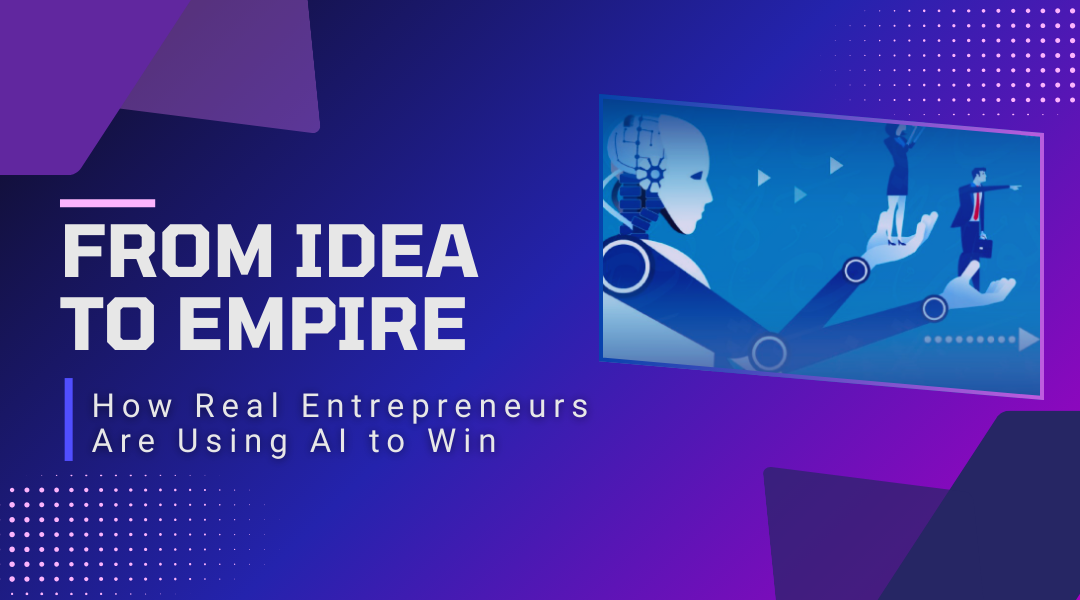We can talk about the potential of artificial intelligence all day long. But the real proof—the stuff that truly sparks that “aha” moment—isn’t found in theory. It’s in the trenches, where actual entrepreneurs are using these tools to solve real problems and build remarkable businesses. Let’s pull back the curtain on how a few savvy founders are leveraging AI not as a magic bullet, but as a force multiplier for their creativity, hustle, and strategic vision.
Case Study 1: The Freelancer Who Got Her Time Back
1. The Hustle: Elena was a talented freelance illustrator, but she felt more like an admin assistant. The constant cycle of drafting project proposals, negotiating contracts, and crafting pitches for new clients was consuming her. The very work that fueled her passion—drawing—was getting squeezed into nights and weekends.
2. The AI Pivot: Elena decided to systemize her business. She stopped starting from a blank page every time.
- Proposals with Punch: She fed her past winning proposals into an AI tool, asking it to analyze her successful language and generate new proposal templates tailored to different client types (e.g., a startup vs. a large publisher).
- The Polite Follow-Up Machine: She used AI to draft a sequence of gentle, professional follow-up emails for outstanding invoices and project inquiries, which she could personalize in seconds.
- Portfolio Power-Ups: When updating her online portfolio, she used an AI image generator to quickly create mockups of her artwork on t-shirts, book covers, and posters, showing clients her work in context without a expensive photo shoot.
3. The Payoff: Elena slashed her administrative workload by nearly two-thirds. Those reclaimed hours? She poured them into a passion project—a series of prints—which she then sold online. This side venture, powered by her freed-up time, now generates a full 25% of her annual revenue.
Case Study 2: The Local Bakery That Became a Content Powerhouse
1. The Hustle: “The Rising Dough” was a beloved neighborhood bakery known for its sourdough. Their online presence, however, was stale. The owner, Miguel, knew he needed to post on Instagram and send newsletters to compete, but between baking at 4 a.m. and managing the storefront, content creation was an afterthought.
2. The AI Pivot: Miguel started using AI to repurpose one piece of content into a dozen others.
- The Blog That Fed Everything: He’d record a quick voice memo describing the story behind a new pastry. Using AI, he turned that memo into a short blog post, an engaging Instagram caption, and a thread on Twitter about the baking process.
- Visual Storytelling: He used AI tools to generate unique, aesthetic visual themes for his social media posts based on the season (e.g., “warm autumn tones with a rustic texture”).
- The Automated Sommelier: For his weekly newsletter, he used AI to generate playful “pairing” suggestions (e.g., “This week’s cherry danish pairs perfectly with a hot cup of black tea and a rainy morning”).
3. The Payoff: Their social media engagement tripled in two months. The consistent, high-quality content established Miguel as an expert, not just a baker. He launched a weekly “baking kit” subscription based on his most popular posts, driving a new, high-margin revenue stream that now accounts for most of his online sales.
Case Study 3: The Consultant Who Built a Bespoke AI Intern
1. The Hustle: David ran a niche consulting firm helping companies navigate sustainability regulations. He was the sole expert, and his value was his deep, personalized analysis for each client. The bottleneck was the initial research phase—spending days sifting through dense government documents and recent legal updates for every new project.
2. The AI Pivot: David didn’t use AI for client work. He used it for prep work.
- The Research Dynamo: He built a custom AI assistant using a platform like ChatGPT Enterprise. He uploaded thousands of pages of regulatory documents, past reports, and industry white papers.
- Instant Briefings: For a new client in the automotive sector, he could ask his AI, “Scan the latest updates from the EU and California on battery disposal regulations and summarize the key compliance challenges for a mid-sized auto parts manufacturer.” In minutes, he had a structured briefing.
- Drafting a Foundation: The AI could then draft a preliminary outline for the client report, complete with relevant citations pulled from the source material.
3. The Payoff: David cut his research time by over 70%. This allowed him to take on more clients without sacrificing the quality of his bespoke analysis. More importantly, it freed him to focus on the high-value strategic advice his clients truly paid for, deepening those relationships and allowing him to raise his rates significantly.
Conclusion: The New Entrepreneurial Operating System
The thread connecting these stories isn’t that AI did the work for them. It’s that AI handled the repetitive, time-intensive, and often cumbersome tasks that drained their energy and creativity.
Elena is still the brilliant illustrator. Miguel is still the master baker. David is still the expert consultant. AI didn’t replace their core genius; it protected it. It automated the overhead of running a business, allowing them to double down on their unique value.
The lesson for any entrepreneur is clear: Your competitive edge is no longer just your idea or your skill set. It’s your ability to strategically leverage AI to offload the grind. The goal isn’t to become an AI expert—it’s to become a strategist who uses AI to build a smarter, more focused, and ultimately more human-centric business. The future belongs to those who wield these tools not to work harder, but to think bigger.
